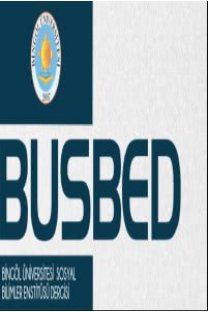ADALET: KOMEDİ İLE TRAGEDYANIN DİYALEKTİK BİRLİĞİ
JUSTICE: THE DIALECTIC UNITY OF THE DIALECTIC UNITY OF
___
- AESCHYLUS (1926), Agamemnon, Libation-Bearers, Eumenides, Fragments, trans. H. Smyth, William Heinemann, London.
- AESCHYLUS (2000), Zincire Vurulmuş Prometheus, Çev: A. Erhat-S. Eyüboğlu, İş Bankası Kültür Yay.
- AESCHYLUS (2009), The Complete Aeschylus, Volume II: Persians and Other Plays, eds: Peter Burian-Alan Shapiro, Oxford University Press.
- AESCHYLUS (2010), Oresteia, çev.Y. Onay, Mitos Boyut Yay, 2010.
- AESCHYLUS (2014), The Oresteia, trans. Lloyd-Jones, Bloomsbury, London.
- AGAMBEN, Giorgio (2001), Kutsal İnsan, Egemen İktidar ve Çıplak Hayat, çev.İ. Türkmen, Ayrıntı.
- BARKER, Derek W.M (2009), Tragedy and Citizenship, Suny Press.
- CORNFORD, F.M (1957), From Religion to Philosophy, Harper&Brothers Publishers.
- De MAISTRE, JOSEPH (1993), St Petersburgh Dialogues, trans. Richard A Lebrun, McGill-Queen’s University Press.
- EAGLETON, TERRY (2003), Sweet Violence The Idea of the Tragic, Blackwell.
- EAGLETON, TERRY (2012), Tatlı Şiddet: Trajik Kavramı, çev. Kutlu Tunca, Ayrıntı Yay.
- HOMER (1990), The Iliad, trans. Robert Fagles, Penguin Classics.
- McNEILL, Will (2000), “A ‘scarcely pondered word’. The place of tragedy: Heidegger, Aristotle, Sophocles”, Philosophy and Tragedy, eds.M.de Beistegui-S. Sparks, Routledge.
- PAKSOY, Banu Kılan (2011), Tragedya ve Siyaset, Mitos Boyut Yay.
- ISSN: 1309-6672
- Yayın Aralığı: Yılda 2 Sayı
- Başlangıç: 2011
- Yayıncı: Yusuf Aydoğdu
YOKSULLUK ÇALIŞMALARINDA HANE/AİLE STRATEJİLERİ ÜZERİNE KAVRAMSAL BİR TARTIŞMA
Zeynep Serap TEKTEN AKSÜRMELİ, Serdar SAĞLAM
HÜSEYİN CAHİT YALÇIN’IN 1946 TARİHLİ RAPORU ve BASIN TARİHİMİZDEKİ ÖNEM
THOMAS HOBBES’DA EŞİTLİK, ÖZGÜRLÜK VE GÜVENLİK SORUNU: DOĞA YASASI NLİK SORUNU: DOĞA YASASI TEMEL
BİR GÜNEY KORE ÜNİVERSİTESİNDE BAND APP'IN KULLANIMI ÜZERİNE BİR DURUM ÇALIŞMAS
TÜRK HUKUK SİSTEMİNDE KONKORDATO UYGULAMASININ İSLAM HUKUKU VE EKONOMİSİ AÇISINDAN DEĞERLENDİRİLMESİ
Ayhan ORHAN, Muhammed Sami AKKUŞ
GÜTSEL ÖZDEŞLEŞME VE ÖRGÜTSEL SİNİZM ARASINDAKİ İLİŞKİ: ULUSAL YAZINDA BİR META-ANALİZ ÇALIŞMASI
TÜMELLER VE ÖZELLİKLER ARASINDAKİ İLİŞKİNİN REALİZM VE TROP KURAMLARI AÇISINDAN DEĞERLENDİRİLMESİ
ALGILANAN YENİLİKÇİLİK, İŞLETMEYE DUYULAN GÜVEN VE MARKA SADAKATİ ÜZERİNE BİR ARAŞTIRMA
